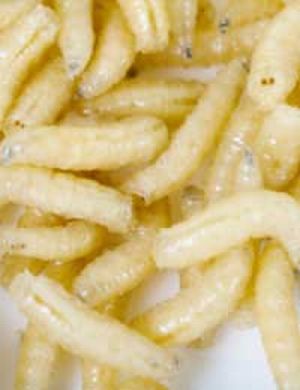|
|
Casu Marzu Cheese
|
Casu marzu is created by leaving whole Pecorino cheeses outside with part of the rind removed to allow the eggs of the cheese fly Piophila casei to be laid in the cheese. A female Piophila casei can lay more than five hundred eggs at one time. The eggs hatch and the larvae begin to eat through the cheese. The acid from the maggots' digestive system breaks down the cheese's fats, making the texture of the cheese very soft; by the time it is ready for consumption, a typical casu marzu will contain thousands of these maggots.
Consumption
Casu marzu is considered to be unsafe to eat by Sardinian aficionados when the maggots in the cheese have died. Because of this, only cheese in which the maggots are still alive is usually eaten, although allowances are made for cheese that has been refrigerated, which can kill the maggots. When the cheese has fermented enough, it is often cut into thin strips and spread on moistened Sardinian flatbread (pane carasau), to be served with a strong red wine. Casu marzu is believed to be an aphrodisiac by local Sardinians. Because the larvae in the cheese can launch themselves for distances up to 15 centimetres (6 in) when disturbed, diners hold their hands above the sandwich to prevent the maggots from leaping. Those who do not wish to eat live maggots place the cheese in a sealed paper bag. The maggots, starved for oxygen, writhe and jump in the bag, creating a "pitter-patter" sound. When the sounds subside, the maggots are dead and the cheese can be eaten.
|
|









